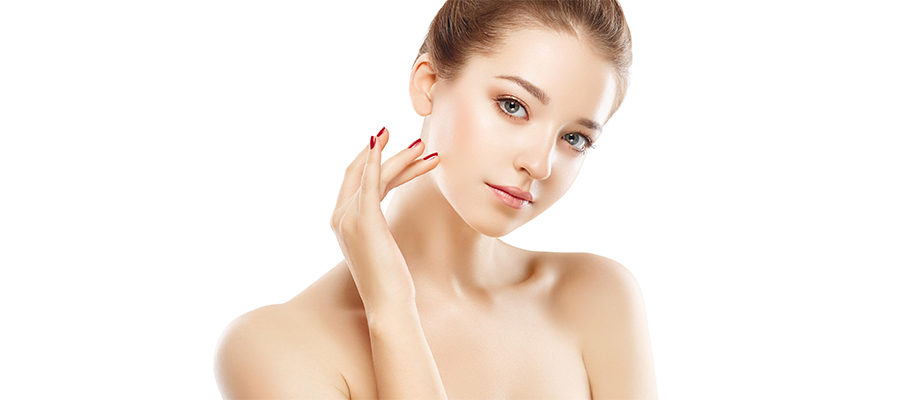
The nose, which has a considerable place in the beautiful and handsome appearance because it is located in the middle of our face, is an organ where even small deformations will immediately catch the eye. For this reason, when it comes to deformations in the nose, many women and men today go to clinics for rhinoplasty surgery.
What is Rhinoplasty surgery?
Nose aesthetics, or rhinoplasty as it is called in medicine, is an aesthetic operation that covers all the operations performed on the nasal bone, nasal cartilage, nasal tissue and nasal skin in order to change the shape of the nose. Rhinoplasty is performed for health problems as well as aesthetic concerns. In this respect, it would not be wrong to say that when it comes to rhinoplasty, it is a procedure that combines health and beauty, as in many aesthetic surgery applications.
How is Nose Aesthetic surgery performed?
Nose aesthetics is a surgery performed specifically for the individual. Depending on the needs of the person, the nasal bone, cartilage tissue, skin layer or all three can be changed together. When planning rhinoplasty, planning is made according to the individual’s face, skin in the nose, skin thickness and the patient’s wishes. After a personalized planning for nose surgery, treatment is started.
When starting rhinoplasty, local anesthesia with sedation or general anesthesia is applied first. This is important for reducing the patient’s loss of sensation. The difference between sedated local anesthesia and general anesthesia is that the effect of sedated local anesthesia is limited to a certain part of the body, while the effect of general anesthesia affects the whole body. While the patient remains unconscious during general anesthesia, the patient has a drowsy state during local anesthesia. Since rhinoplasty is usually performed under general anesthesia, the patient does not feel pain or discomfort. However, sedation may sometimes be preferred in very minor procedures such as nasal tip intervention.
In rhinoplasty, an incision is made inside the nose or between the nostrils just below the nose. From here, a procedure is performed according to the pre-operative planning about how much the nasal bones, nasal cartilage and nasal tissue will be removed. If the wall called the septum between the two nostrils of the nose is crooked or twisted, a correction for breathing can be made here as well. If there is an addition in the planning made before the surgery, the cartilage taken from the deep points of the nose or the ear can be added here. For larger changes, ribs or implants may be preferred. After these changes are completed, the surgery is completed by suturing the incisions.
After the operation, the patient is kept under control by the nurses and health personnel in the recovery room in order to evaluate the health status of the patient during the recovery period and is taken to the room when he/she wakes up.
Two basic techniques are used in rhinoplasty, open and closed. Along with these, other methods such as let down, protective rhinoplasty or piezzo surgery are used as sub-branches of these techniques. The method of the surgery is decided during the consultation examination according to the demands of the person and the nose form.
Who is a suitable candidate for Rhinoplasty surgery?
The main reason for having rhinoplasty is the desire for an aesthetic appearance of the nose due to a congenital or subsequent reason. Rhinoplasty can be applied to people who want to repair deformities caused by an injury, people who want to correct a birth defect, people who want to change the physical appearance of the nose, and people who want to improve some breathing difficulties.
Who can not have Rhinoplasty surgery?
Nose aesthetics cannot be applied to diabetics, high blood pressure (hypertension) patients, people with diseases that can cause serious bleeding such as hemophilia, heart patients, patients with severe mental disorders and people in the obesity class.
However, the age limit for formal rhinoplasty surgery is 18. If the patient has a post-traumatic deformity, then this surgery can be performed at a younger age.
What is the preparation process for Rhinoplasty surgery?
- First, the use of blood thinners such as aspirin should be discontinued 15 days before the surgery. Not using these drugs, which have a serious bleeding risk, is important for the health of the patient.
- This information should be shared with the doctor in case of having diseases such as flu and cold before the operation. Since having surgery after these diseases carries a serious risk of infection, it may be possible to postpone the surgery or take precautions.
- Smoking and alcohol use should be stopped 15 days before the surgery. Since smoking and alcohol will impair blood circulation, it will prolong the recovery period after surgery.
- Herbal nutritional supplements or herbal teas should be discontinued 15 days before surgery, as they may increase the risk of bleeding.
- Before the operation, it is necessary to use sunscreen with high protection against the harmful rays of the sun.
- Washing the face with antibacterial soap the day before the surgery will kill the germs in that area.
- In order for the doctor to see the blood circulation more easily during the surgery, the nail polish on the nails should be removed.
- Nutrition and sleep patterns should be controlled 15 days before the operation. Going to the operation in a sleepy state is in terms of staying fit after the operation.
- Since it will be advantageous in terms of the recovery period to choose comfortable clothes, buttoned or zippered clothes for and after the surgery, these clothes should be prepared.
How is the Rhinoplasty recovery process?
Although the recovery process after rhinoplasty varies from person to person, patients usually return to their normal lives within a week. It may take six months to a year for the nose to take its final appearance.
4-5 days after the operation. The splint in the nose is usually removed on the same day and the patient is taught how to massage his nose. At this point, regular massage is important as it will prevent edema formation.
What should be considered after rhinoplasty?
- In order to reduce bleeding and swelling, you should sleep with more than one pillow in a position where the head is higher than the chest.
- It is normal to have a slight bleeding and accumulated mucus until after the dressing is removed. There is no need to worry as there is accumulated mucus.
- Activities that require high energy such as aerobics and jogging should be avoided.
- Bathing should be done in such a way that the water flows from above.
- Since it is important to blow your nose and avoid constipation, it is important to avoid nasal compression, so fibrous foods and plenty of water should be consumed.
- Clothes with buttons or zippers that will not come into contact with the nose should be worn.
- Glasses or sunglasses should not be worn against the nose. In this process, it may be a choice to tape the glasses to the forehead.
- High-protection sunscreen should be used when going out in the sun. It should not be forgotten that if you go out in the sun without using sunscreen, you are open to the risk of infection.
- It is normal for a purple-blue color to form from the nose to the under-eyes. This complaint will go away on its own within a few weeks. Again, it is normal to experience edema or swelling.
- In order for the swelling to go down faster, it should be fed away from sodium.
- After the surgery, a week off should be taken from places such as work and school.
Frequently asked questions about Rhinoplasty
In which situation should Nose Aesthetics be performed?
Rhinoplasty should be performed in cases of nasal arch appearance, low nose, in cases where the angle between the lips needs to be corrected, nasal width, deformities such as nasal fractures, asymmetrical nasal appearance, nasal concha, sinusitis or deviation.
Is pain and pain felt in Nose Aesthetics?
Since anesthesia will be given during the operation in rhinoplasty, it is not possible to feel pain and pain. Even though there is a feeling of pain and pain with the loss of the effect of the anesthesia, these complaints will pass with the painkillers given by the doctor. The most severe pain can be experienced on the first night.
Can the nose be corrected aesthetically with the breathing problem ?
In addition to the breathing problem, when the patient shares his aesthetic concerns with his doctor, an appropriate surgery plan can be prepared, and the nose can be corrected aesthetically with the breathing problem.





